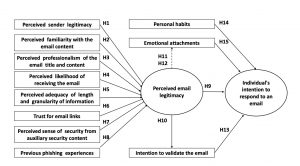Patients know best: Qualitative study on how families use patient-controlled personal health records
Patients Know Best: Qualitative Study on How Families Use Patient-Controlled Personal Health
By Hanna Schneider, Susan Hill, and Ann Blandford
Journal of Medical Internet Research
2016;18(2):e43
Background: Self-management technologies, such as patient-controlled electronic health records (PCEHRs), have the potential to help people manage and cope with disease.
Objective: This study set out to investigate patient families’ lived experiences of working with a PCEHR.
Methods: We conducted a semistructured qualitative field study with patient families and clinicians at a children’s hospital in the UK that uses a PCEHR (Patients Know Best). All families were managing the health of a child with a serious chronic condition, who was typically under the care of multiple clinicians. As data gathering and analysis progressed, it became clear that while much of the literature assumes that patients are willing and waiting to take more responsibility for and control over their health management (eg, with PCEHRs), only a minority of participants in our study responded in this way. Their experiences with the PCEHR were diverse and strongly shaped by their coping styles. Theory on coping identifies a continuum of coping styles, from approach to avoidance oriented, and proposes that patients’ information needs depend on their style.
Results: We identified 3 groups of patient families and an outlier, distinguished by their coping style and their PCEHR use. We refer to the outlier as controlling (approach oriented, highly motivated to use PCEHR), and the 3 groups as collaborating (approach oriented, motivated to use PCEHR), cooperating (avoidance oriented, less motivated to use PCEHR), and avoiding (very avoidance oriented, not motivated to use PCEHR).
Conclusions: The PCEHR met the needs of controller and collaborators better than the needs of cooperators and avoiders. We draw on the Self-Determination Theory to propose ways in which a PCEHR design might better meet the needs of avoidance-oriented users. Further, we highlight the need for families to also relinquish control at times, and propose ways in which PCEHR design might support a better distribution of control, based on effective training, ease of use, comprehensibility of data security mechanisms, timely information provision (recognizing people’s different needs), personalization of use, and easy engagement with clinicians through the PCEHR.



